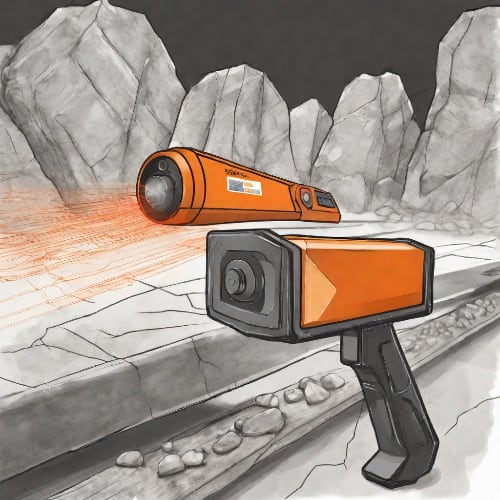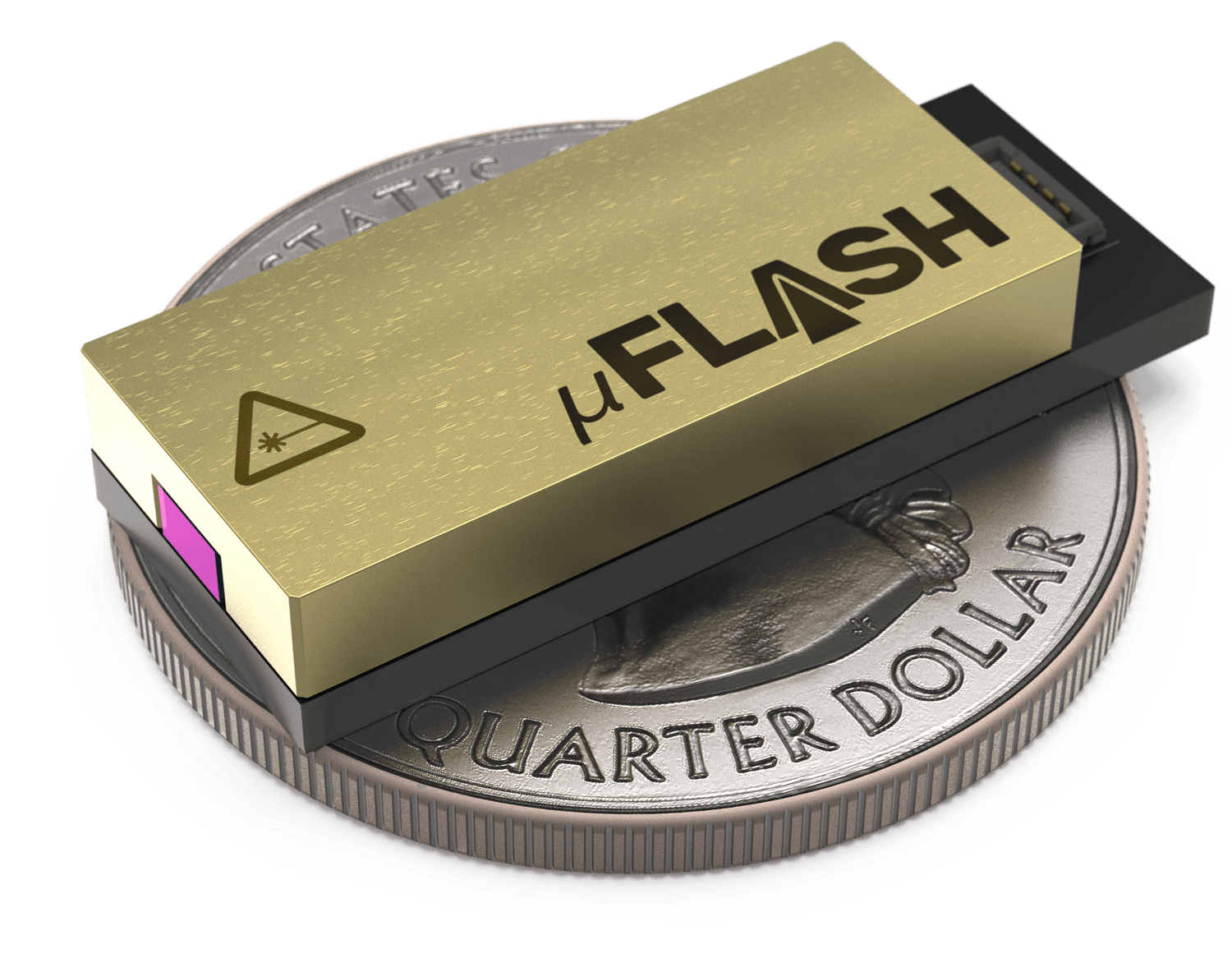1030 nm Nanosecond Q-Switch Laser
Item Code: 1030U-11CDescription
Current configurations in production:
| Variant | Pulse duration, ns | Pulse energy, μJ | Peak power, kW | Polarization |
|---|---|---|---|---|
| 1.3 |
150 | 115 | Random | |
Laser Rental
Rent a high-performance laser for a time-limited experiment. Or try several laser options before deciding, which to choose.
Success
Your request has been sent successfully. We'll get back to you as soon as possible.
Back to homepageRequest
Begin your product purchase process, with flexibility for customization based on your needs.
Success
Your request has been sent successfully. We'll get back to you as soon as possible.
Back to homepage| Parameter | Minimum Value | Typical Value | Maximum Value |
|---|---|---|---|
| Central wavelength, nm | 1028 | 1030 | 1032 |
| Longitudinal modes | - | Multiple | - |
| Spectral line width FWHM, nm | - | 0.7 | 1 |
| Pulse duration, ns | - | 1.3 | - |
| Repetition rate, Hz (pulse-on-demand mode) | Pulse on demand | 50 | 100 |
| Pulse energy, µJ 1 | 20 | 100 | 150 |
| Pulse-to-pulse stability, % | - | 20 | 40 |
| Transversal modes | - | TEM00 | - |
| Beam diameter at aperture (1/e2), mm | - | 0.2 | - |
| Beam divergence (full angle), mrad 2 | - | 5 | 10 |
| Vertical bore sighting accuracy, mrad | - | - | 20 |
| Horizontal bore sighting accuracy, mrad | - | - | 40 |
| Control interface type | - | SlimStack Hybrid Power Receptacle (Molex 104249-0810) | - |
| Operation mode | - | APC, pulse detection | - |
| Input voltage, VDC | - | 1.65 | 2 |
| External laser diode driver requirement 3 | - | +2 V DC, 12A | - |
| Dimensions (LxWxH), mm 4 | - | 35.1 x 12.1 x 6.3 | - |
| Beam height from the base, mm | - | 3 | - |
| Heat-sinking requirement, °C/W | not needed (for low duty cycle single shot opperation) |
- | 1 (needed for higher rep. rate operation) |
| Operating temperature, °C | 20 | 30 | 40 |
| Warm up time | - | Instantly operational at operating temperature | - |
| Temperature stabilization | - | No | - |
| Overheat protection | - | NTC in laser head | - |
| Reverse voltage protection | - | No | - |
| Storage temperature, °C (non-condensing) | -20 | - | 70 |
| Net weight, kg | - | 0.008 | - |
| Electrical energy consumption, mJ 5 | - | 48 | - |
| Warranty, months 6 | - | 14 (Limited) | - |
| RoHS | - | Yes | - |
| CE compliance | - | - General Product Safety Directive (GPSD) 2001/95/EC - (EMC) Directive 2004/108/EC |
- |
| Laser safety class | - | 3B | - |
| OEM lasers are not compliant with | - | IEC60825-1:2014 (compliant using additional accessories) | - |
1 Peak power limitations apply. Max. peak power currently is 115 kW for unpolarized radiation. Polarized radiation is available on request. Higher pulse energy versions might be developed based on NRE contracts.
2 The laser is not collimated internally.
3 A demo electronics board is provided with the first order of 5 pcs.
4 Only laser head.
5 e.g. 1W @20Hz pulse repetition rate in single-pulse triggering mode.
6 Warranty is not applicable to faults of the pump laser diode - a component which is sensitive to electronics circuitry design and operational regimes. Please consult with Integrated Optics regarding most appropriate driving circuit design, duty cycles, etc.
Typical spectrum
Typical spectrum of 1030U-11C nm passive Q-Switch DPSS laser. Measured with 10 pm resolution.

Drawing
Dimensional drawing of the uFlash laser

Pulse-to-pulse stability of a uFlash laser
The video below shows superior pulse-to-pulse stability of a uFlash laser, operated at 50 Hz repetition rate, 120uJ pulse energy. The measurement was carried out using two different oscilloscopes and a fast 500 MHz bandwidth photodetector. The pulse duration of the laser was about 0.9 ns.

Flash LiDAR
Flash LiDAR is an advanced remote sensing technology that utilizes laser pulses in a rapid, sweeping fashion to create high-resolution 3D maps of the surroundings. Unlike traditional Lidar systems that rely on scanning mechanisms, Flash Lidar captures the entire scene simultaneously, providing real-time and comprehensive spatial information. This innovative approach enhances the speed and efficiency of mapping, making Flash Lidar well-suited for applications in autonomous vehicles, robotics, and environmental monitoring.

Photoacoustic imaging
Photoacoustic imaging is a process where powerful laser pulses interact with material by exciting acoustic waves. Similarly, as in ultrasound imaging, the propagating acoustic waves are analyzed by piezo-based detectors (pick-ups), and the complete 3D image is formed by raster scanning or other techniques, such as laser-based holography or interferometry.

Laser Induced Breakdown Spectroscopy (LIBS)
LIBS stands for laser-induced breakdown spectroscopy and is a rapid chemical analysis technique, first introduced in 1960s. Unlike in Raman spectroscopy, it uses short laser pulses to create plasma plumes on the surface of a sample and the spectrum is characterized of this plasma using low-cost spectrometers. It is also categorized as an in situ operation, that’s duration can last up to only a few seconds.

